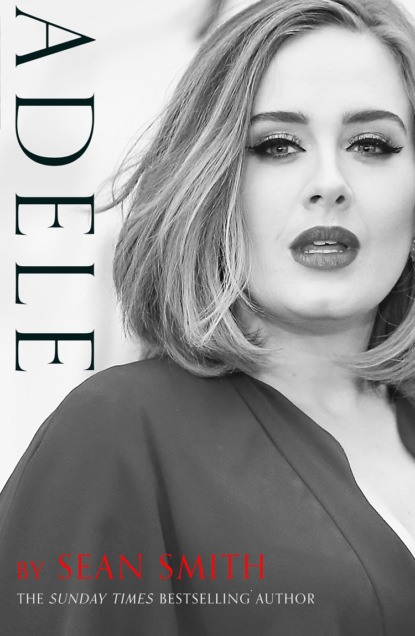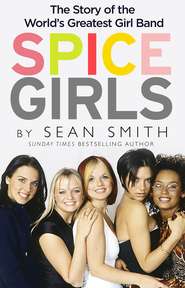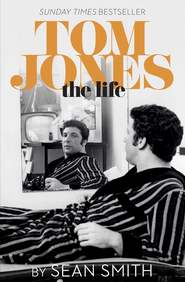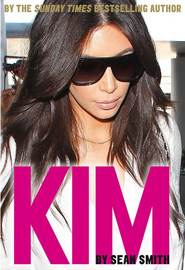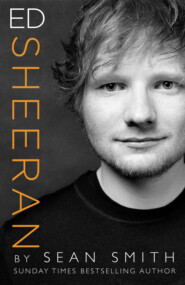По всем вопросам обращайтесь на: info@litportal.ru
(©) 2003-2024.
✖
Adele
Настройки чтения
Размер шрифта
Высота строк
Поля
All should have been set fair for the couple, but the reality was that they were two young people thrown together more by fate than compatibility. ‘I loved Penny,’ said Marc, ‘but after a few months the chemistry began to go.’ Eventually, when Adele was nine months old, they split up.
It had never been a secret that Marc was Adele’s dad, but he wasn’t named as the father on Adele’s birth certificate. Penny told him she had left the space blank. A practical woman, she may or may not have been influenced by her need to move quickly up the housing ladder. Her decision didn’t have an impact on their break-up in any way; in fact, it probably made it easier for them to resume separate lives. They remained on good terms with one another.
Marc didn’t go far. He moved into a house share near The Flask pub in Highgate. He would still see plenty of Penny and Adele and would frequently stay over in Shelbourne Road. He never had a formal agreement with Penny about supporting her. If he had a good week, he would hand over a wad of cash or come bearing gifts of clothes and toys. And his father, who was quite well off by this time, gave Penny a monthly allowance to help out.
When Adele was a bit older, Marc would take her to the London Zoo in Regent’s Park, which she loved. He recalled, ‘She loved the monkeys most of all. To a child, they are naughty, aren’t they?’ Marc used to tease his daughter: ‘I shall never forget one day at the zoo when she went to the loo, came out and saw that I had a scratch on my hand.’
‘What happened to you, Dad?’ asked Adele.
He replied, ‘Well, the lion jumped over the fence and had me.’
‘She looked at me, eyes wide, and said, “Oh did he, Dad?”’
There was never any question of Penny and Marc getting back together. He started going out with a school teacher and their relationship quickly became serious. When Adele was two, Marc’s father asked him to go back to South Wales for the summer and help him run a takeaway outlet that he had taken for the season on Barry Island, a few miles along the coast from Penarth. Where Marc and his father were based later became famous as the setting for the popular comedy series Gavin and Stacey. Holidaymakers would queue up at one of three counters for burgers, hot dogs, ice cream, candy floss or sticks of rock and then eat them strolling along the front.
The first year was not a success, perhaps because of the decline in visitors to the resort, so at the end of the summer season Marc went back to London to be close to Adele and his friends. He also kept in close touch with his brother Richard, who was happily settled in the capital. They used to meet most weeks for a pint and a catch-up at the Punch and Judy. The following summer, Marc’s father decided they should have another go with the Barry venture. The lease cost £18,000 for the season, so it wasn’t something to be undertaken lightly. He asked Marc to take charge while he continued to run the plumbing business.
Penny brought her daughter down to see everyone and they stayed at the house in Penarth. Adele, who was now three, loved playing along the promenade or going to Rabaiotti’s for one of their renowned knickerbocker glories. It was a huge treat for a little girl living in Tottenham. If he had the time, Marc would take her swimming. He had already taught her to swim at the local leisure centre, within walking distance of Shelbourne Road, and it’s the one sport she enjoyed.
At the end of the summer, Marc decided not to return to London this time. He wanted to see how things would work out in South Wales. Life had moved on for both him and Penny. She now had a steady boyfriend, so the days of casually dropping in to see his ex and his daughter were at end. Penny was still only twenty-one and had her whole life in front of her. She was determined that having Adele to care for wasn’t going to stop her living her life. They were a team.
2
Spice World (#ulink_4dd25ba5-7205-56d8-ab2c-8d11a1c09238)
Just a week before her fourth birthday, in the spring of 1992, Adele was hidden inside Penny’s trench coat and smuggled into the Brixton Academy in South London. They were there to watch The Beautiful South in concert. Looking back, Adele observed, ‘It was amazing – my clearest memory of when I was little.’
The Beautiful South were a wry and quirky, yet very popular band formed in 1988 by two former members of The Housemartins, Paul Heaton and David Hemingway, who were both from Hull in Yorkshire. Two years later, their best-known single, ‘A Little Time’, was their only number one, but it established them as one of the leading chart acts of the decade. It’s a feisty break-up song and easy to understand why it was a favourite of Penny’s, as it expresses the need for a little time to ‘find my freedom’.
Penny loved them and wanted her daughter to share the experience. The Academy is a standing venue, so Adele couldn’t see anything. That problem was solved when Penny asked a well-muscled, bodybuilder type if he wouldn’t mind putting her daughter on his shoulders. Adele now had the best view in the hall. The man also came to her rescue when a host of balloons were released and the little girl failed to grab one: ‘He walked through the crowd and knocked someone out who wouldn’t give me a balloon.’
When Paul Heaton finally met Adele in the autumn of 2015, he was flattered that she remembered the concert so well all those years later. ‘She owes me the price of a ticket,’ he joked. ‘Unfortunately, it was only about £2 then.’
Although there was no great musical heritage in the Adkins family, Adele’s home was always filled with music. Her mum would play guitar along with her favourite chart tracks and encourage Adele to get up on the sofa and sing.
It’s easy to forget how young Penny was and these were the years she might have been enjoying college if fate had dealt a different hand. Adele has always appreciated that: ‘She just thought I was amazing. She could have been at university but she chose to have me.’ She once described her as being a ‘hippy mum’.
Penny never treated Adele as an inconvenience but always as someone to be included in whatever was going on. She always had plenty of friends round to socialise into the night with music and good conversation, and she liked her daughter to be part of these happy times. Fortunately, Adele wasn’t shy and enjoyed staying up.
On Friday nights, that also meant letting her watch Later … with Jools Holland, which was broadcast at 11.15 p.m. The relaxed and informal mix of big names performing next to virtual unknowns would prove to be an enduring success. The Kinks, for instance, rubbed shoulders with cutting-edge rapper Neneh Cherry and La Polla Records, a Spanish Basque punk-rock band.
Mother and daughter forged a lifelong bond through sharing so many experiences, especially musical ones. Penny had no hesitation in loading up the Citroën and taking her daughter, then eight, to the Glastonbury Festival were they sat in the mud and watched Radiohead and The Prodigy on the main Pyramid Stage.
That was by no means Adele’s first experience of a festival. She was an old hand by then. Closer to home, just after her fifth birthday, in June 1993, Penny took her to a one-day pop festival, Great Xpectations, in Finsbury Park. The event was a benefit to support the campaign to grant a permanent radio licence to the XFM station.
Damon Albarn and Graham Coxon from Britpop darlings Blur sang an acoustic version of the band’s latest single ‘For Tomorrow’. Damon is one of those people who drift in and out of the Adele story, not necessarily in a good way, but this was the first time she came across him. He wasn’t top of the bill, however.
That honour fell to The Cure, led by the charismatic singer and songwriter Robert Smith. The band are one of the great survivors of British music, still hugely popular thirty-seven years after they began in the post-punk era of 1979. During Penny’s teenage years, they were renowned for their dark and gothic sound that culminated in their most successful recording, Disintegration. Penny went through a Goth stage and was a huge fan of the group. Adele was a little unsure: ‘I used to be really scared of Robert Smith because he looked like Edward Scissorhands.’
The album provided the soundtrack for Adele’s Tottenham years. In particular, her mother’s favourite track, ‘Lovesong’, stayed with her and reminded her of those days. Ironically, on that unseasonably cool June afternoon, The Cure didn’t perform it, although they did play probably their best-known hit, ‘Friday I’m in Love’, as an encore.
The number one record that month was ‘Dreams’, the breakthrough hit for Gabrielle, a young black singer from Hackney with a silky smooth voice. Louise Gabrielle Bobb was refreshingly different. She wrote her own songs, had one of the most distinctive soulful voices in pop and was very much her own woman in a male-dominated industry – and she wore a sequinned eye patch to hide a drooping eyelid.
With her distinctive short black hair, she didn’t look like your average pop star. She built the foundation of her career by singing in nightclubs. She explains, ‘If there had been talent shows like The X Factor in the early 1990s, I would have done terribly! So, when success did come it was a real victory because I don’t think anybody really expected it.’
Adele loved Gabrielle’s eye patch so much that Penny knuckled down like any dutiful mother and made her daughter one of her own. Adele had a bout of conjunctivitis and when it was time for her to return to school once she was no longer infectious, Penny presented her with her custom-made patch. She had bought one in Boots and sewn on sequins. Adele would jump up onto the table wearing her eye patch and deliver her own version of ‘Dreams’.
Gabrielle wore her famous eye patch for eight months before abandoning it; Adele wore hers for even less time. Its appeal was greatly reduced when she was teased at school. At the earliest opportunity, it was put in a drawer, only to be worn for special performances at home. Penny encouraged her to sing in front of her friends, even arranging the lighting in the house so it would seem as if the spotlight was on Adele while she sang.
The story of Gabrielle’s life and career is fascinating, almost spookily so, when compared to Adele’s. Her Dominican-born mother raised her and her three younger half-brothers as a single mum and chose not to name Gabrielle’s father on the birth certificate. Gabrielle had regular contact with him when she was a child, but that dwindled as she grew older.
Gabrielle always had issues with her appearance, not just because of her eye, but also her weight. She was never a skinny, model type. She had a son in 1995 and subsequently regarded being a mum as more important than fame or fortune, although she is a multimillionaire and would never need to work again if she chose not to.
She wrote songs that reflected her mood, was discovered when an independent label heard her demo, released only three albums in the first six years of her career and liked to be in control of her own destiny, not at the beck and call of a record company. ‘I was notorious for taking three years between albums. I love making music, but not 365 days a year. I’m probably just lazy, but I can’t force myself to write songs. I have to long to be back in the studio and feel good vibes when I’m recording.’
Gabrielle never saw herself as a celebrity, preferring to slip quietly out of the limelight when she didn’t have a record to promote – in a fashion remarkably similar to Adele at a later date. Her ‘disappearance’ led to the public wanting her more, so when her third album, Rise, came out in 1999, it went straight to number one, as did the single of the same name. It is a break-up song tinged with sadness, but one that is ultimately uplifting, ‘… ready to rise again’. Most of her songs have an autobiographical edge – ‘diary entries’ as she calls them.
Adele went to the Coleraine Park Primary School, just round the corner in Halefield Road. She once said she was the only white face in her classroom of thirty local children. That may be a slight exaggeration, but not by much. She may well have been the sole white English child. It was a very diverse community. During Adele’s time in the 1990s, there were some eight major ethnic groups, but by the end of the following decade, there were forty-two ethnicities, with something like twenty-six different languages being spoken in the school.
Adele was popular, not least because she hated bullies. Marc recalled, ‘Tottenham is a rough place, but if another kid was being picked on, then she would be the one sticking up for them. She was also very protective of her friends.’
She didn’t stand out in class, and one talent her teachers may not have been aware of is that she wrote a lot, doodling little bits of rhyme and poetry, almost from the time she learned to write her own name. She was forever writing her mother little notes, especially if she had been told off for not tidying her room. Then she would shut herself away and push a note underneath the door to let her mum know that she wasn’t coming out for a year. From a very early age, she was putting her feelings down on paper.
Every couple of months, mainly in the school holidays, Penny would load up the boot of the Citroën and drive down the M4 so they could stay with Nana and Grampy in Penarth. If she needed a break, Penny always knew she could leave Adele there, and her daughter would be loved and well cared for by her grandparents, whom she adored.
Grampy John became a father figure in Adele’s life, simply by giving her so much time and attention. He doted on her. Marc explained, ‘Adele would spend much of the summer with my parents and most of that time my dad would be playing with her, talking to her, showing her the sights.’
John was only in his mid-forties when Adele was born. Fit and energetic, he was a big man with a darker, more Celtic appearance than his two sons. He may not have looked like a traditional grandfather figure, but he held conventional values: ‘He was a very hard-working man, my father – a very honest, straight-up sort of chap. He really was a lovely guy.’
John was also very fond of Penny. ‘He just loved my mum,’ recalled Adele. John and Rose didn’t always wait for them to visit Penarth. Sometimes the proud grandparents would travel up to London and stay in a local B&B so they could see them both.
Adele was very fond of her mother’s big family, but in Tottenham she was one of many, while in Penarth she was the centre of attention. Sometimes Adele would come down to visit with her best friend, her cousin Cema, who was Aunt Kim’s daughter. Kim had married a Turkish man called Ahmet in 1982 and subsequently had four children, Bren, Cema-Filiz, Erol and Erden.
Occasionally, Penny and Adele would spend Christmas in South Wales, where the young girl was spoiled rotten. One of her earliest Christmas presents from her father was a red toy guitar, which she loved. She would often try to play Penny’s grown-up guitar, but she was too little for that; here was something of her own.
These were happy times that Penny, in particular, always made fun for her daughter. One Christmas Eve, when Adele was asleep and Nana and Grampy had gone to bed, she carefully cut up a newspaper in the shape of feet and placed them on the stairs. When her daughter awoke in the morning, she said, ‘Look, Adele, it’s Santa’s footprints. He’s been.’
The great treat for Adele was in summer, when her grandparents would leave Penarth in their caravan. Marc, who would go too if he wasn’t working, recalled, ‘My mum and dad were very keen caravaners. They had a close group of friends. They were all caravaners and always had a laugh and a sing-song. My dad could be the life and soul. Adele loved it. She was a kid, wasn’t she, and it was an adventure.’
They didn’t go far, but it seemed like the open road to a girl from Tottenham. They would drive down the coast to stay at Three Cliffs Bay in the beautiful Gower peninsula or further along the coast at the Kiln Park camp in Tenby, one of the loveliest resorts in Pembrokeshire.
Adele was a kind and pretty, blonde-haired little girl with green eyes, and she made friends easily in South Wales. Many of the men and women that Marc had known all his life now had young families and they were very welcoming to the youngster from London. Her proud father observed, ‘She was a lovely kid. She was one of those kids who, if she had a bag of sweets, would give them all away and keep one for herself.’
She tended to be on the skinny side, even though she wasn’t sporty. She was not a girly girl. ‘She was funny and very sociable,’ said Marc. ‘She was more of a tomboy type than a girl with dolls. She was a scruffy yo-yo.’
Not everything was idyllic. On one memorable day in Tenby, Adele went missing. One moment, she was bouncing away on a trampoline; the next, nobody could see her, which prompted a frantic search. Marc had been windsurfing at the top of the beach. When he got back to his parents and his girlfriend, he asked, ‘Where’s Adele?’ She had vanished.
Marc panicked. ‘Imagine your child has gone missing on a packed beach. It’s terrifying, isn’t it? My mum is crying and screaming. There were sand dunes behind us and there were two old winos there and so I marched straight over and demanded to know where my daughter was. It was mayhem. So then I went straight to the nearest chip bar and I said, “Can I use your phone?” So I dialled 999 and fair dos to the police, they were there in five minutes.





